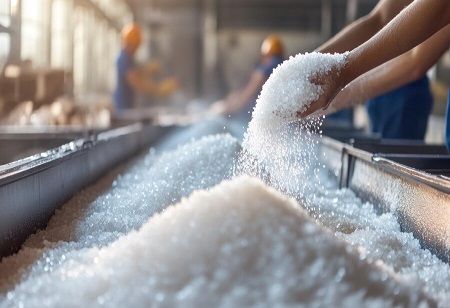
- Philippines to import 424,000 tonnes of sugar in 2025 under SRA’s Order No. 8 to stabilize supply and prices.
- Imports labeled as “C” sugar (reserved stock), released after SRA reclassification.
- Thailand’s sugar exports to the Philippines dropped 67% in 2024, but rose 4.24% in early 2025.
Reports from The Philippine Star, shared by Thailand's Department of International Trade Promotion (DITP), indicate that the Philippines plans to import as much as 424,000 tonnes of refined sugar in 2025 under a recently authorized programme by the Sugar Regulatory Administration (SRA).
The import initiative seeks to stabilize local supply and limit increasing sugar prices, presenting potential opportunities for key exporters such as Thailand. The SRA's choice comes after an in-depth examination of past supply patterns and stock flow information, along with feedback from several participants in the sugarcane industry.
Although sugar volumes and prices in the Philippine market are currently stable, the SRA board emphasized that the approaching conclusion of the sugarcane harvest and limited available stocks require government action. They contend that this is essential for ensuring stability in both supply and pricing.
Imports under this order are scheduled to start gradually from July 15 and should be completed by November 30. The arriving sugar will be labeled as “C” sugar, indicating it as reserved stock, which cannot be immediately made available for local sale until the SRA reclassifies it. Additionally, the SRA has connected this import initiative to larger efforts focused on enhancing the earnings of local farmers while also stabilising retail prices.
Authorized importers consist of organizations that have acquired raw sugar from domestic producers at elevated prices, along with those who have pledged to export raw sugar to the United States. Recent SRA data from June 22, 2025, shows that the Philippines’ raw sugar output for the 2024-2025 crop year hit 2.06 million tonnes, reaching a four-year peak.
Also Read: How Moisture Can Make And Break The Food We Produce And Eat?
However, official government assessments indicate that domestic usage is considerably greater, estimated at around 2.2 to 2.4 million tonnes each year. The Office of Commercial Affairs in Manila observed that “sugar” is a very sensitive commodity in the Philippines, with imports rigorously controlled via Tariff-Rate Quotas (TRQs) managed by the SRA.
The Philippines generates sugar for local use and some exports, with an annual average of approximately 2.3 million tonnes (50 percent for industrial purposes, 32 percent for households, and 18 percent for various institutions), but the country occasionally depends on imports when domestic supply falls short. In 2024, Thailand's sugar exports to the Philippines were worth USD121.38 million, reflecting a notable decline of 67.02 percent from USD368 million in 2023.
In the first half of 2025 (January-June), Thai sugar exports to the Philippines experienced a recovery, totaling USD20.29 million, which is a 4.24 percent rise from USD19.47 million during the same period in 2024.

